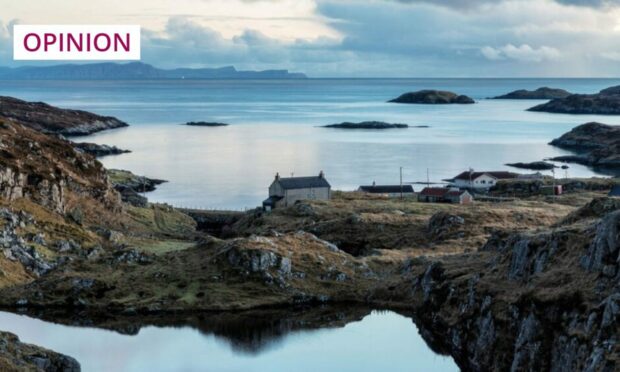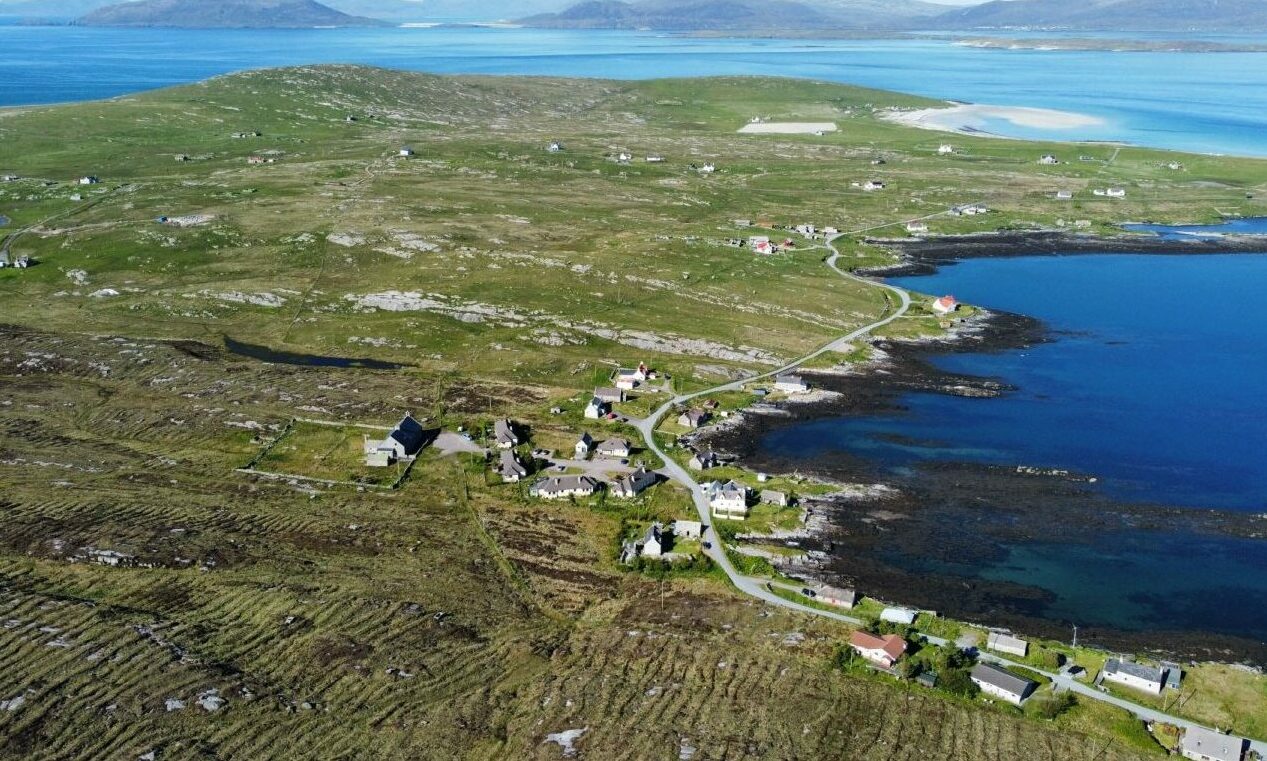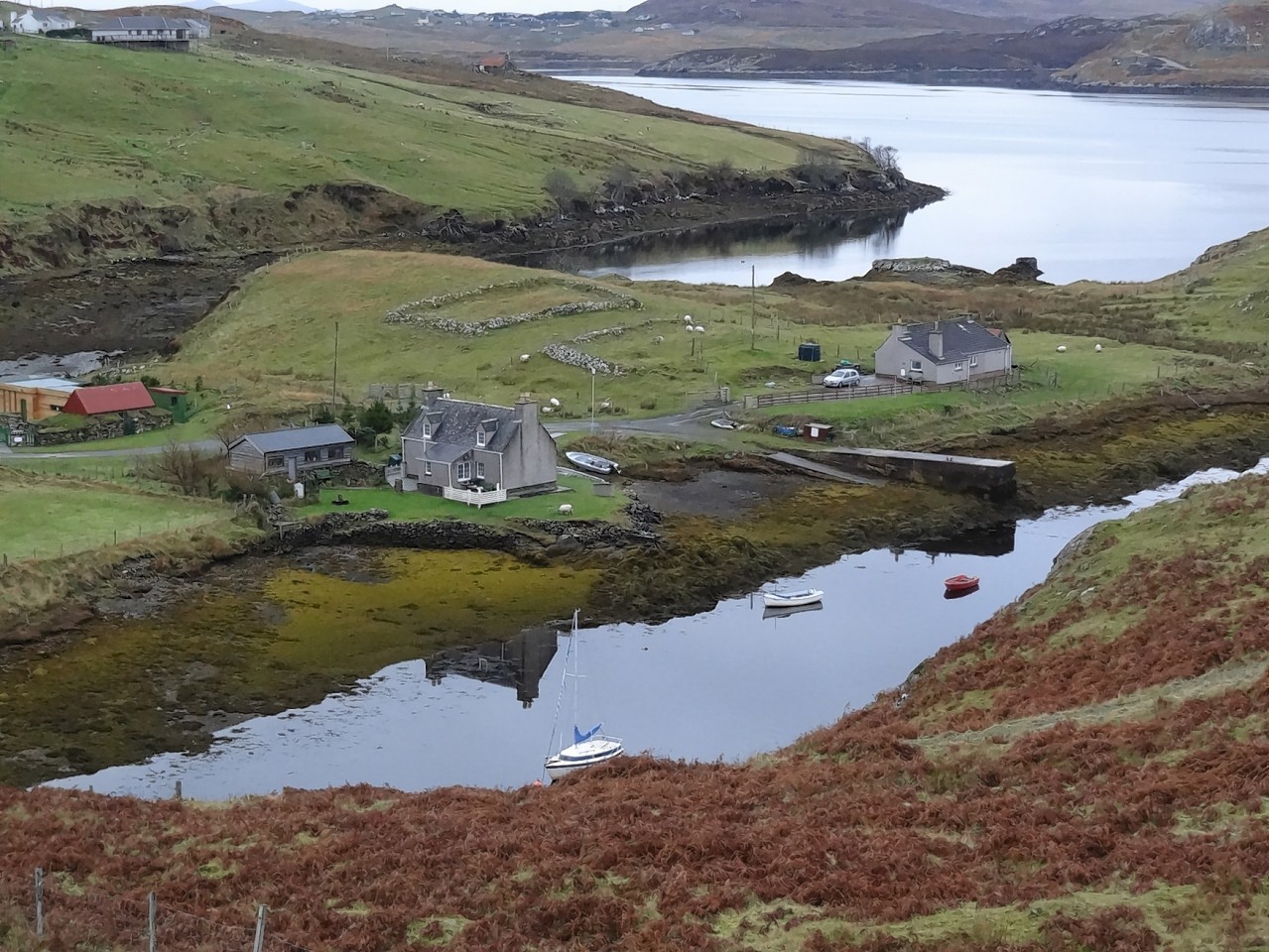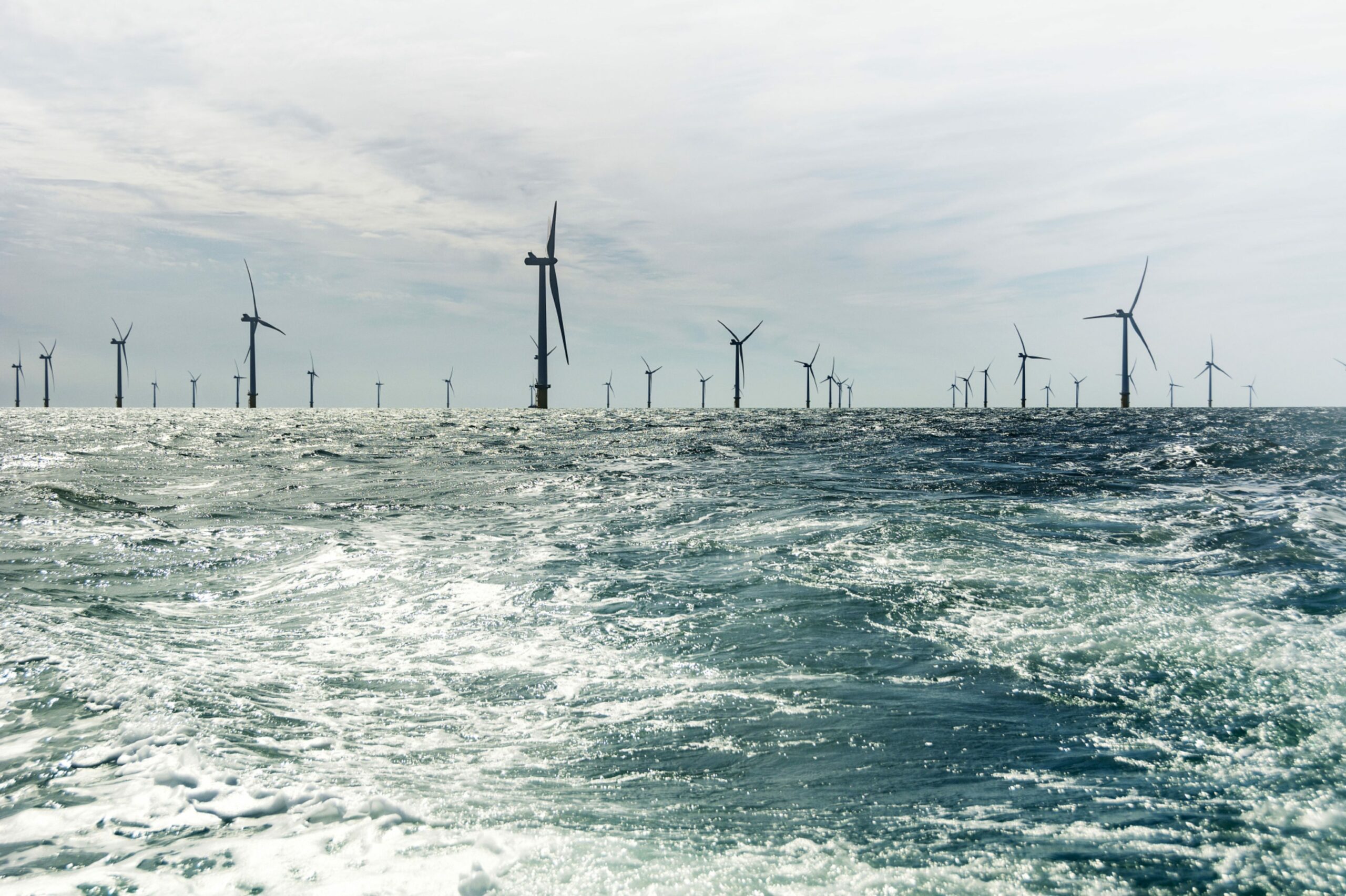The result of the ballot on a community buyout of the Bays of Harris Estate was due on September 14, but it has been delayed by the Queen’s death.
The long-time owners – the Surrey-based Hitchcock family – however, are willing to take a sale to the community “very seriously” if there is decisive local support amongst the 600 plus residents.
The Bays of Harris is an area in the south-east of the island. It is also the title of the traditional tune to which psalm 118 was set to, at the late Queen’s request, in Gaelic. The nation heard it sung by Karen Matheson in St Giles Cathedral on Monday.

The 27,000 acre estate embraces 274 crofts in 28 townships. It also includes the island of Berneray, which has been physically attached to North Uist by a causeway since 1998. But, it was always known as Berneray Harris, to distinguish it from several other islands of the same or similar names.
Despite being so close to North Uist, a MacDonald island, it was part of the lands of the Macleods or MacLeods (the upper and lower case division doesn’t exist in Gaelic) of Dunvegan, Skye. It was originally in the parish of Harris, along with St Kilda and Rockall.
To the north lies Lewis, which came under the MacLeods of Lewis, who also had Raasay, just off Skye. It was a family thing. Two branches of a clan, descended from a Norseman.
Hopefully there will be a clear vote in favour of a community buyout. Many residents’ own forebears, had been cleared from the more fertile west coast of Harris in the 19th century. But, a feasibility study shows that community ownership of the estate, which currently makes a profit, can help deliver affordable housing, jobs, and crofting support.
Should the Scottish Government put funding into community ownership?
Already significantly more than 50% of the land of the Outer Isles is community-owned, with over 75% of the archipelago’s population living on it. More than 70% of all the land in community ownership in Scotland is found there.
Land reform legislation gives crofting communities, such as those on the Bays estate, rights which would allow them to force a sale. But it is not the easiest route
The autonomous Community Land Scotland Outer Hebrides, was formed to represent the islands’ community owners. It can have a unique relationship with Comhairle nan Eilean Siar (Western Isles Council).
Perhaps the Scottish Government should consider giving these community landowners, the £5 million it was, until recently, willing to give in £50,000 bonds to 100 people to remain in or move to the islands. Finance to work with the council on building well-insulated, affordable homes.
There has been a growing recognition that the best way to combat depopulation in remote areas is community ownership. They have had a good role model.
Seventy years before 100 crofters in Assynt staged their historic buyout in 1993, an earlier generation of crofters across the Minch took responsibility for 69,000 acres of Lewis. This followed the gift of the landward part of the Stornoway Estate by Lord Leverhulme to the Stornoway Trust, for the benefit of the inhabitants, who elect half of the 10 trustees every three years. An early example of how local popular control of land can work.
Land reform legislation gives crofting communities, such as those on the Bays estate, rights which would allow them to force a sale. But it is not the easiest route, as the crofters on the Pairc Estate found.
The last decade could have been so different
The Outer Isles could do with some positive news. They have had to endure a lamentable level of ferry service from the Scottish Government-owned CalMac. Meanwhile, more than 40% of the residents were living in fuel poverty before Putin invaded Ukraine and fuel prices began to rocket. The figure is now 70%. But the islands should have been a green energy power house by now.
Nine years ago, a report on renewable energy projects from the UK and Scottish Governments, estimated that, by 2020, up to 392 jobs could be created in the Western Isles, and over 3,500 by 2030. But, a subsea cable – an interconnector – would be needed to carry all the extra power generated from wind, wave and tidal sources to the national grid on the mainland. It was seen by UK agencies as too expensive, at over £700 million.
This writer has limited knowledge of laying subsea cables – OK, none whatsoever – but £700 million? In 2012, two cables began carrying power from the Spanish mainland to Majorca. It had cost £316 million, despite being three times the distance across the Minch.
It looks as though the Outer Isles will now finally get their interconnector. But the last decade could have been so different.
Everything in Scotland’s islands is significantly more expensive than the mainland, with the possible exception of peat. Many islanders fear they will still have to decide to heat or eat, like their mainland counterparts.
Yet, the UK Government is determined to borrow money to provide help, rather than tax the eye-watering excess profits of the energy companies. Why?
David Ross is a veteran Highland journalist and author of an acclaimed book about his three decades of reporting on the region




Conversation